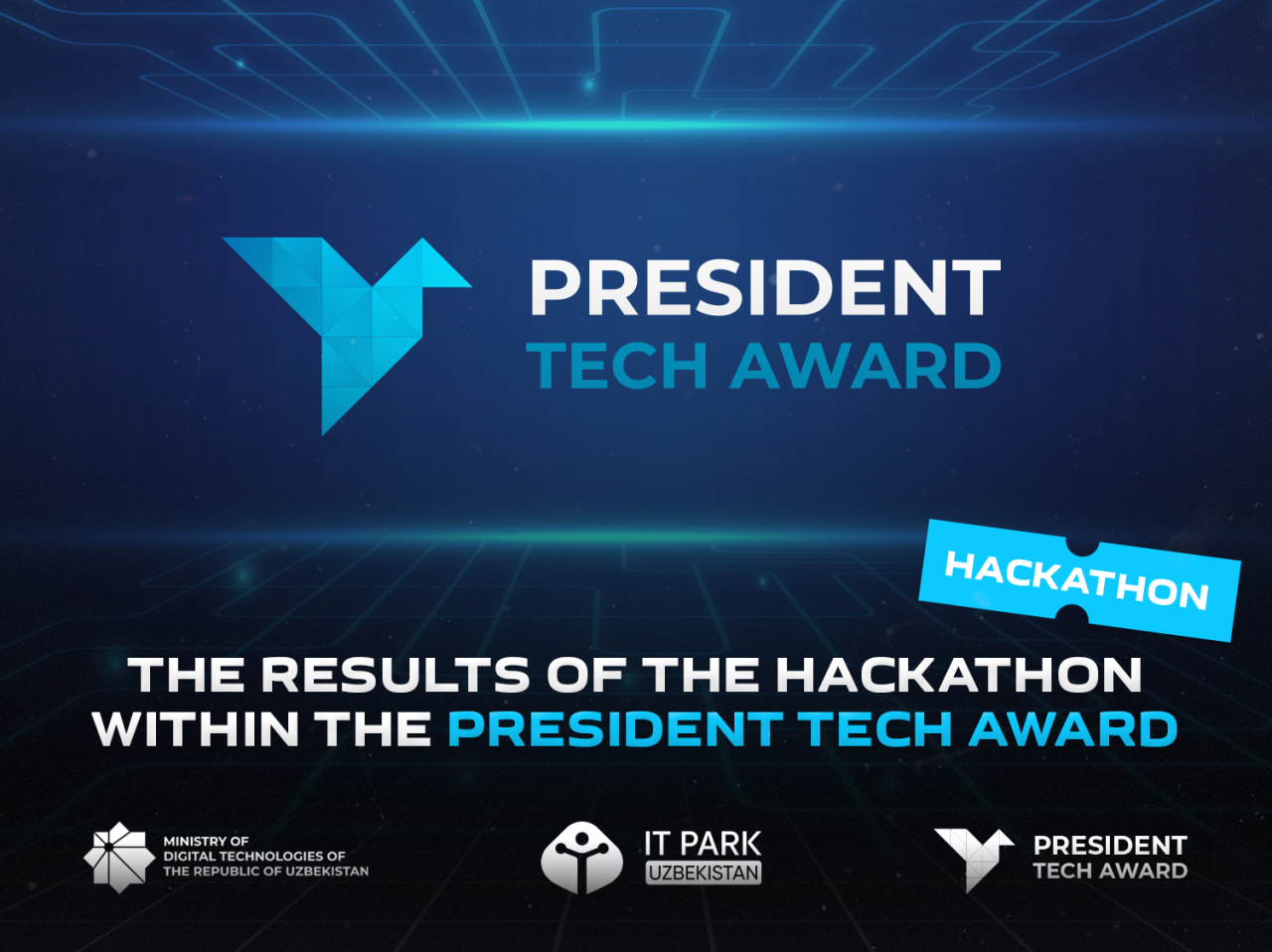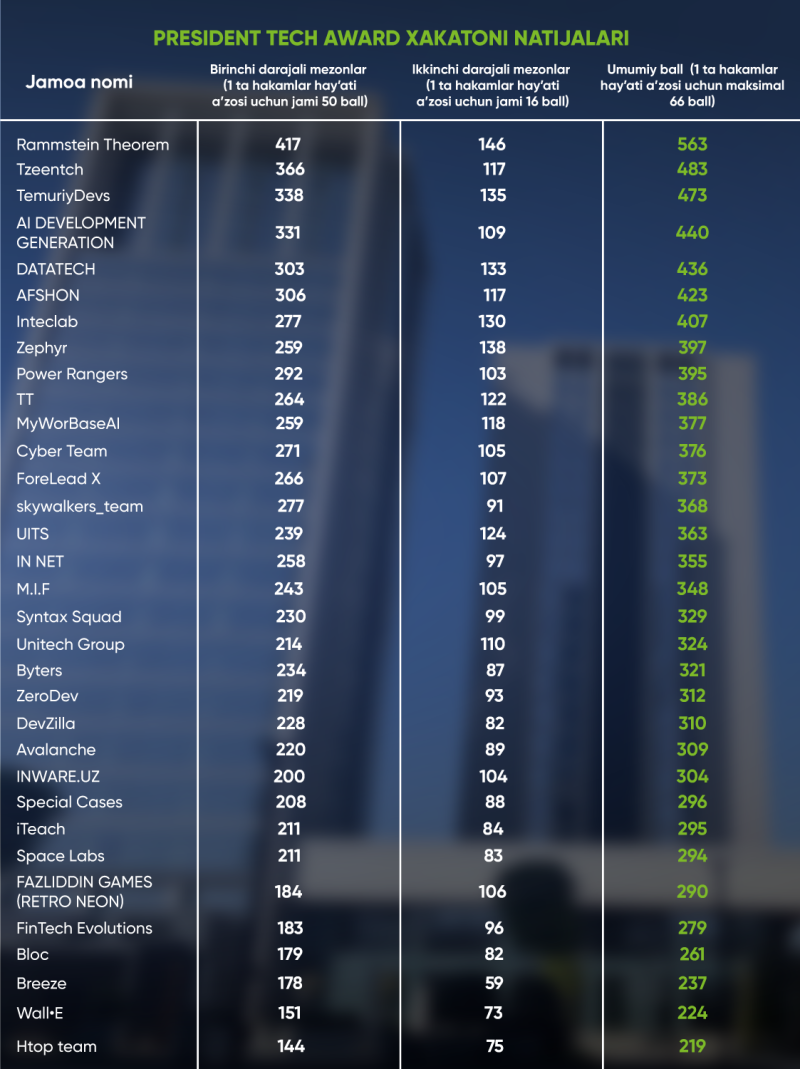
Results of the hackathon within the President Tech Award
On November 3rd, a meeting on the final results of the President Tech Award hackathon was held in the Tashkent branch of IT Park, between the jury members and the captains of the participating teams.
The competition “Best Startup in the Field of Digital Technologies” (President Tech Award) with a total prize fund of $1 million, commenced on May 1st.
This competition comprises 5 main and 1 special categories (hackathon).
- Main categories – $900 000.
- Special category (hackathon) – $100 000.
More than 4,000 applications were submitted from all over the republic to participate in the hackathon, and over 650 participants registered, forming 170 teams.
The hackathon took place from October 13th to 15th at the IT Academy Astrum. Major companies such as EPAM Systems, Amazon Web Services (AWS), AWS User Group, Plug and Play, and Google Developer Groups (GDG) participated as partners in the hackathon.
During the hackathon, participants developed solutions in one of the following areas:
- Artificial Intelligence Technologies
- Digital Technologies in Education
- Digital Technologies in Healthcare
- Entrepreneurship and Financial Technologies
- Cybersecurity Technologies
The competitionʼs jury consisted of 10 highly qualified experts from EPAM Systems and Plug and Play. Among them were senior project managers, software development and testing specialists, cloud engineering managers, directors of various domains with extensive experience in judging similar competitions and a career span in the IT field ranging from 7 to 23 years.
The technical implementation of the projects was evaluated by a team of mentors comprising more than 20 individuals, specialists from companies such as EPAM Systems, GDG, and AWS, all possessing experience in the IT field ranging from 5 to 20 years.
On the final day of the hackathon, participants presented the projects they had developed over a span of 3 days. Following the presentation, the jury members identified the Top-10 best teams.
The winner was announced on October 25th. The award ceremony took place within the framework of ICTWEEK UZBEKISTAN 2023. Based on the juryʼs assessments and the technical implementation of the project during the hackathon, the team “Rammstein Theorem” was declared the winner with their project “Sogʻboʻl” — an artificial intelligence-based platform for the analysis and storage of medical data.
Primary criteria:
1. Relevance of the proposed startup project — assesses the significance of the idea formulated in the project for addressing contemporary issues and challenges.
2. Evaluation of the attainability of the results of the startup project — assesses the presence, rationale, and sufficiency of the proposed methods and approaches for achieving the stated outcomes.
3. Assessment of the projectʼs potential competitive advantages — assesses the key characteristics that provide the product/technology advantages over existing counterparts.
4. Market demand for the product or service — assesses essing the market demand and commercial prospects of the stated product or service.
5. Completeness of the product:
- Functionality — the extent to which the product prototype performs its core functions
- Workability — the prototype should be functional and free of critical errors
- Interface and design — evaluating the interface design
- Integration — integration with other systems or technologies
Secondary criteria:
6. Assessment of the teamʼs potential:
- Composition — the presence of specialists from different fields capable of covering the entire development cycle required during the hackathon.
- Presentation — evaluation of the clarity and effectiveness of explanations regarding how the project works and the advantages it offers.
- Evaluation of the quality of responses to jury questions about the project.
- Team discipline — assessment of the teamʼs timeliness in providing necessary materials during the hackathon and their communication skills.
7. Technical implementation:
- Use of modern technologies and in-demand programming languages.
- Properly chosen architecture for problem-solving and scalability capabilities.
The final tournament table appears as follows:

Detailed information about the participantsʼ projects can be accessed via the link:
2023-11-03